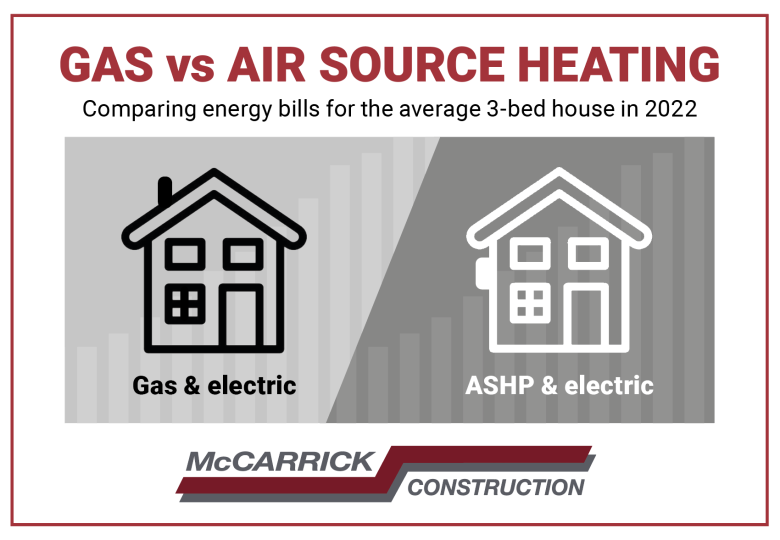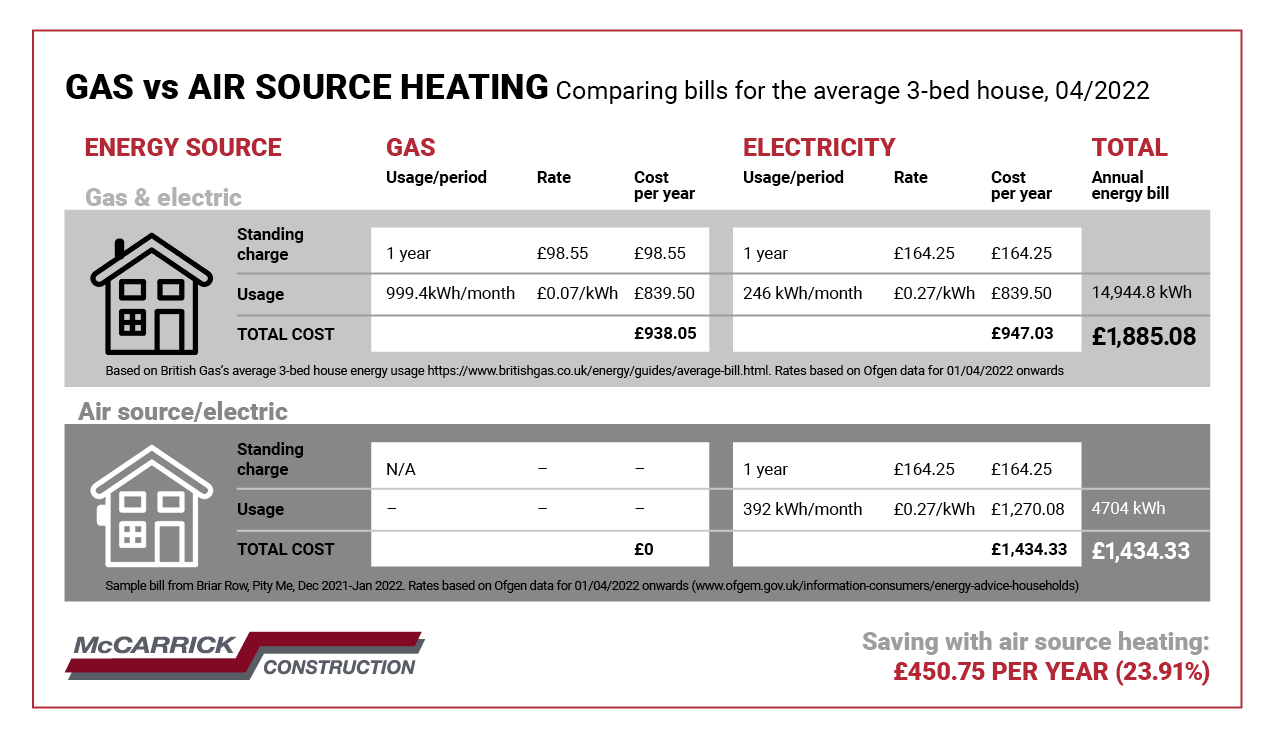Air Source Heat Pumps and energy bills – the reality

Energy bills are going through the roof. Supply issues, fluctuations in the global economy, sanctions on Russia and general uncertainty about the future are all affecting energy prices across every sector. Householders can no longer get away with setting up a direct debit and reviewing their tariff every couple of years. We all need to stay informed and learn to interpret our energy bills correctly, while cutting our usage and reducing our reliance on fossil fuels. Is there a way out of this spiral? Could buying a new-build house heated by renewable energy be the answer to your problems?
We’ve recently completed one of Britain’s first entirely air source heated new-build developments, Briar Row in Pity Me, so we’re well-placed to be able to answer this question.
No such thing as free heat
Using an air source heat pump to heat your home and water doesn’t mean all your energy will be free. Your air source unit needs to run in the background all year round, and it uses electricity to do this, which you need to pay for alongside all your other electricity usage eg. your fridge, induction hob, appliances, chargers and lighting. However, the electricity your ASHP uses will harvest more energy from the outside air and transfer it into your home, so you will have more energy available to you than if you were directly heating your home using your paid-for energy source, whether that’s gas or electricity.
Why this can be a confusing topic
So far so good, however it is incredibly difficult to compare energy usage given the differing and changing costs of gas and electricity, the different fixed or variable tariffs available, the differing rates sometimes given on each tariff. The cost of installation has to be factored in. And on that subject, please note – our comparison will be useful to buyers of new-builds with renewable heating systems built in, rather than those wanting to convert, because retrofitting air source systems into existing homes is extremely variable in terms of time and costliness.
However, all these limitations are exactly why British energy consumers struggle to make sense of their bills, even with the help of price comparison sites – it’s too complicated to be explained in a simple sentence. So we decided to see how much more or less our air source heated properties would cost to heat in 2022, comparing them to an established industry average and showing as simply as possible what the difference is, to help homebuyers and our fellow house-builders decide whether to invest in ASHP or not.
Our handy Gas vs ASHP comparison for the homebuyers of 2022
As our example, we used British Gas’s published usage figures for the average UK 3-bed house. We applied the rates for electricity and gas published by Ofgem from 1st April 2022 to get the total energy bill for that house from April this year onwards.
We also took a sample bill for Briar Row, taken from December 2021/January 2022 (when the weather is cold so bills would logically be higher than average). We applied the same rates to get an estimate of the energy bill for 2022. Here is what we found:

Overall you can see that:
- Total energy usage is approximately 1/3rd in a Briar Row home compared to the average home, a massive saving for those wanting a carbon neutral lifestyle
- Electricity usage is higher at Briar Row
- Electricity has always been more expensive but can come from a variety of different sources according to your choice of supplier so is not subject to quite the same geopolitical factors as gas
- Gas usage at Briar Row is non-existent and consequently the gas standing charge also does not apply.
- A resident of an air source heated new-build like Briar Row will save around 25% on their annual energy bills at April 2022 rates
In short…
Energy is becoming more and more expensive across the board, so if you have a chance to live in a well-insulated, air source heated home, you’re likely to save 25% on your energy bills and protect yourself against further gas price rises.
